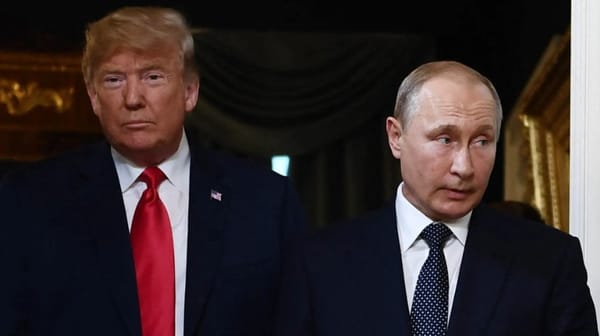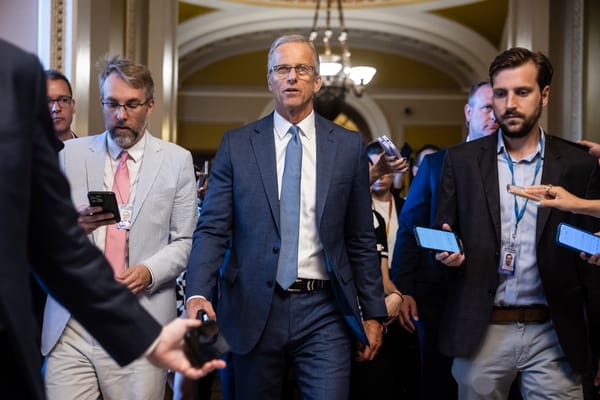U.S.-Philippines Defense Alliance Strengthened Amid South China Sea Tensions

On March 28, 2025, U.S. Defense Secretary Pete Hegseth met with Philippine President Ferdinand Marcos Jr. and Defense Secretary Gilberto Teodoro in Manila to reaffirm Washington's "ironclad" commitment to its defense treaty with the Philippines. The visit comes amid escalating tensions in the South China Sea, where China's assertive actions have increasingly challenged Philippine sovereignty and regional stability. Hegseth's trip underscores the growing importance of the U.S.-Philippines alliance in countering Chinese aggression and maintaining freedom of navigation in one of the world's most strategically vital waterways.
Background: Rising Tensions in the South China Sea
The South China Sea is a critical maritime corridor for global trade and security, with overlapping territorial claims by China, the Philippines, Vietnam, Malaysia, Brunei, and Taiwan. China asserts sovereignty over nearly the entire region through its controversial "nine-dash line," a claim invalidated by a 2016 ruling from the Permanent Court of Arbitration in The Hague. Despite this ruling, Beijing has intensified its activities in recent years, including militarizing artificial islands, deploying naval forces to contested areas, and obstructing Philippine vessels.
Recent incidents have heightened tensions:
- Chinese vessels have used water cannons and aggressive maneuvers to block Philippine ships near disputed areas like Scarborough Shoal.
- Chinese military aircraft have approached Philippine patrol planes at dangerously close distances.
- The Philippines has accused China of "dangerous" actions that threaten regional peace.
Key Outcomes of Hegseth's Visit
Hegseth's visit marks the first official trip to Asia by a senior Trump administration official in 2025 and signals Washington's renewed focus on Indo-Pacific security under its "America First" foreign policy. Several key outcomes emerged from the discussions:
1. Reaffirmation of Defense Commitments
Hegseth emphasized the enduring importance of the 1951 Mutual Defense Treaty between the U.S. and the Philippines. He assured Marcos that Washington remains committed to assisting Manila in deterring threats and safeguarding its sovereignty.
"Deterrence is necessary globally but especially in this region," Hegseth stated during a joint press conference. "Friends need to stand shoulder to shoulder to deter conflict and ensure free navigation."
2. Enhanced Military Cooperation
The U.S. pledged to deepen military ties with the Philippines through joint exercises, advanced training programs, and additional security assistance:
- Special Forces Training: Bilateral training exercises will be conducted on Batanes, an island chain near Taiwan.
- Defense Industrial Cooperation: A new framework was established to bolster collaboration on unmanned systems, logistics support, aircraft maintenance, and critical minerals production.
- Military Funding: The U.S. committed $500 million to help modernize the Philippine military.
3. Deployment of Advanced Capabilities
Hegseth announced plans to deploy advanced defense systems to the Philippines, including missile systems capable of striking targets up to 1,000 miles away. These capabilities aim to strengthen deterrence against Chinese aggression.
4. Strategic Messaging
Hegseth's choice of Manila as his first destination in Asia sends a strong signal about Washington's prioritization of its alliance with the Philippines amid growing geopolitical competition with China.
Philippine Perspective
President Marcos welcomed Hegseth's visit as a reaffirmation of U.S. support for Manila's efforts to uphold regional stability. Since taking office in June 2022, Marcos has shifted Philippine foreign policy closer to Washington after his predecessor Rodrigo Duterte deepened ties with Beijing.
"We have always understood that the greatest force for peace in this part of the world would be the United States," Marcos said during his meeting with Hegseth.
Marcos also highlighted China's continued disregard for international law in the South China Sea, emphasizing Manila's commitment to defending its territorial rights.
China's Response
China reacted strongly to Hegseth's visit and the deepening U.S.-Philippines defense partnership:
- Warnings Against Cooperation: Chinese officials labeled the Philippines' collaboration with Washington as "playing with fire" and cautioned that it could undermine regional peace.
- Criticism of U.S. Reliability: Senior Colonel Wu Qian accused Washington of having a "remarkable history of failing to uphold commitments and betraying allies."
- Opposition to Missile Systems: Beijing criticized the deployment of American missile systems in the Philippines as a "highly dangerous move."
China continues to assert sovereignty over disputed areas despite international rulings against its claims. Its aggressive posture has raised concerns about potential conflicts involving both regional actors and external powers like the United States.
Broader Implications for Regional Security
Hegseth's visit underscores several broader implications for Indo-Pacific security:
1. Strengthening Alliances
The U.S.-Philippines partnership is part of Washington's broader strategy to counter China's influence by reinforcing alliances with key regional players like Japan and Australia.
2. Deterrence Through Strength
The deployment of advanced capabilities and increased military cooperation aim to deter Chinese aggression while ensuring freedom of navigation in contested waters.
3. Regional Stability
The Philippines' alignment with Washington reflects a shift towards collective security arrangements among Southeast Asian nations facing similar challenges from Beijing.
4. Geopolitical Competition
China's warnings highlight the intensifying geopolitical rivalry between Beijing and Washington as both powers vie for influence in Asia.
Challenges Ahead
Despite progress during Hegseth's visit, several challenges remain:
1. Managing Escalation
As tensions rise between China and its neighbors, there is a risk that confrontations could escalate into broader conflicts involving external powers like the U.S..
2. Balancing Partnerships
The Philippines must navigate its relationships with both Washington and Beijing carefully to avoid jeopardizing economic ties with China while strengthening security cooperation with the U.S..
3. Sustaining Commitments
Questions persist about whether Washington can maintain its focus on Indo-Pacific security amid competing priorities globally.
4. Legal Disputes
The unresolved territorial disputes in the South China Sea continue to pose significant obstacles to achieving lasting peace in the region.
Conclusion
U.S. Defense Secretary Pete Hegseth's visit to Manila represents a pivotal moment for U.S.-Philippine relations amid growing tensions in the South China Sea. By reaffirming Washington's "ironclad" commitment and enhancing military cooperation, Hegseth has demonstrated America's resolve to support its Southeast Asian ally against Chinese aggression.
As geopolitical competition intensifies in Asia, maintaining strong alliances and ensuring stability will be critical for both regional actors like the Philippines and external powers like the United States. The success of these efforts will depend on careful diplomacy, sustained commitments, and effective deterrence strategies that balance peace through strength with respect for international law.
The coming months will be crucial in determining whether these initiatives can effectively counter China's assertive actions while preserving peace and stability in one of the world's most strategically vital regions.




